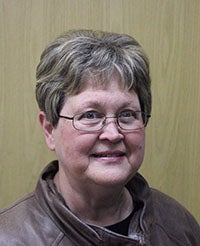Making the gardens welcoming
Published 9:00 am Sunday, April 5, 2015

A heated bird bath provides a place for birds to drink or bathe even in colder temps. – Carol Hegel Lang/Albert Lea Tribune
Serendipity Gardens by Carol Hegel Lang
If you provide it they will come, but first you have to make your gardens a welcoming place for the birds, bees, butterflies and insects as well as other creatures. It doesn’t take much to provide food, shelter, water and a place for them to raise their young. By planting some trees and shrubs, gardeners can give them much needed shelter while also providing berries for them to eat. Blossoms with nectar can bring even more wildlife into your gardens.
Next you will want to add a place for them to get a drink of clean water or bathe in. That can be provided with a birdbath, fountain, pond or stream. When you mention this to people they get all worried about how expensive this will be, but with a little ingenuity you probably already have things in your garage that would work to give them water. Using an old lid from a garbage can, a clay saucer or any shallow container that will hold water works for a birdbath. You can buy some fairly inexpensive fountains and then add a mister to them to invite more birds to enjoy it. Ponds can be small and made from any plastic container that will hold water.
Bird feeders provide seeds for birds to eat all year-long, but planting flowers that provide nectar during the summer and then leaving the seed heads on during the winter will also give birds food through the winter months when insects are not available for them. In early spring the migrating birds will arrive like orioles, grosbeaks, buntings and many other varieties. By putting out grape jelly, mealworms and seeds you can help them until other sources of food are available. I usually put up my hummingbird feeders the third week in April so that the early scouts will find them and bring in the rest of the troops. How I love to watch all of this activity in the yard. W.H. Hudson really puts it so well, “Have you ever observed a hummingbird moving about in an aerial dance among the flowers — a living prismatic gem … it is a creature of such fairy-like loveliness as to mock all description.”
By using no pesticides or fertilizer on your grass, it will be ready to call in the birds seeking out worms and insects for their dinner. If you are lucky enough to have clover in your grass, watch for the bees to flock to the flowers for sweet nectar. In just two short years of stopping the use of chemicals on my grass I have increased the number of robins greatly that visit my yard. It is important to have some grass in your yard and not all flowers because it provide sources of food for many birds.
We have a large variety of birds that visit our yard and feeders but we also have so many insects of the good variety that call these gardens home. It is amazing to watch the flowers and see what appears among them. By planting flowers close together it also provides a bit of shelter. The alyssum that I plant, not only in containers, but also in the gardens will draw in the pollinators.
The need for trees and shrubs, not only to provide places of shelter for the animals, but as a windbreak for your property and shade for you home during the summer months is essential. In my garden on the south border we have three pine trees as well as many shrubs. Along the western border are spruce trees. Throughout the year I will see birds perched on them and under them the rabbits and cats find shelter. How I wish there was more space for a few more of them as I would love to add viburnums that produce berries for the birds to eat. Several of the shrubs flower in spring and the hummingbirds flock to the blooms for nectar. Planting shade-loving perennials under them also gives birds a place to seek shelter or insects on the ground level.
“A bird does not sing because it has an answer. It sings because it has a song.” — Chinese proverb
Carol Hegel Lang is a green thumb residing in Albert Lea. Her column appears weekly. Email her at carolhegellang@gmail.com.



